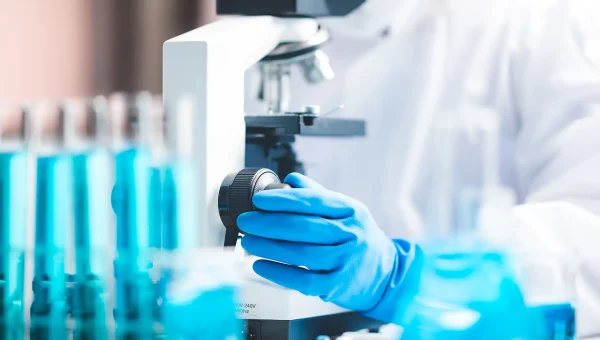Anxiety, a common mental health condition, is on the rise in many parts of the world. It is currently estimated to affect around 8 million people in the UK, with the most common form being generalised anxiety disorder. This condition is defined as excessive and uncontrolled anxiety that causes significant distress over a minimum of six months. It is typically characterised by symptoms such as restlessness, difficulty concentrating, and sleep disturbance. Individuals who are diagnosed with generalised anxiety disorder are more likely to experience a reduced quality of life, unemployment, and suicidality. Furthermore, generalised anxiety disorder often co-occurs with other psychiatric conditions, worsening these issues.
People with generalised anxiety disorder may employ maladaptive coping mechanisms, including avoidance, substance abuse and rumination, which may maintain and even worsen the severity of generalised anxiety disorder. Furthermore, insomnia – a common comorbidity with anxiety – has been linked with the development and reinforcement of anxiety disorders. The coexistence of generalised anxiety disorder and insomnia has also been shown to decrease responsiveness to treatment and exacerbate anxiety symptoms.
What treatments are available for generalised anxiety disorder?
Generalised anxiety disorder is typically treated with a combination of talking therapies and medications. The talking therapy with the highest amount of evidence to support its use is cognitive behavioural therapy. However, other therapies are also available according to patient needs. Most medications used in generalised anxiety disorder rely on increasing the concentration of serotonin available at connections in the brain. With current treatment options, around 80-85% of patients report a 50% improvement in symptoms, whilst half of these achieve clinical recovery. As such there is still a large unmet need to develop new options for individuals affected by generalised anxiety disorder.
Medical Cannabis and Anxiety
A growing body of clinical and observational research has aimed to explore the potential of cannabis and its derivatives in the treatment of anxiety disorders. Cannabis-based medicinal products (CBMPs) primarily interact with the endocannabinoid system (ECS) – a receptor system that has been found to play a vital role in various functions, including mood, emotion, and memory – via cannabinoid receptors (CB1 and CB2).
The effects of medical cannabis on anxiety have been studied in pre-clinical models. These have highlighted a complex relationship between cannabinoids and anxiety. Whereby low levels of cannabinoids are not sufficient to have an effect on anxiety, whilst too high doses can actually lead to increasing anxiety.
While current findings for cannabinoid use in the treatment of anxiety disorders are promising, there remains a lack of high-quality evidence. There have only been two randomised controlled trials for instance which have evaluated the effects of pharmaceutical-grade cannabis on anxiety condition. However, these have both been limited to isolated cannabidiol (CBD) prescribed to individuals with social anxiety disorder before a stress-inducing situation. The authors of a recent study aimed to contribute to this area of research with real-world evidence collected via the UK Medical Cannabis Registry (UKMCR). The UKMCR was launched in 2019 by Sapphire Medical Clinics (now Curaleaf Clinic) to collect prospective, real-world data on patients prescribed cannabis-based medicinal products (CBMPs) in the UK.
Design and Methods of the Study
The primary aim of the current study was to compare the patient-reported outcome measures (PROMs) of patients prescribed CBMPs for generalised anxiety disorder, with and without impaired sleep. The secondary aim was to investigate the safety profile of CBMPs over a 12-month period and to assess the impact of age, body habitus, prior cannabis use, treatment type, cannabinoid dosage, anxiety severity, and sleep quality on the likelihood of experiencing an adverse event (AE).
This prospective cohort study analysed data from the UKMCR for patients receiving CBMP treatment for a primary condition of GAD. During enrolment, clinicians collected demographic data and recorded relevant comorbidities and the Charlson comorbidity index was calculated for each patient. Data on tobacco, alcohol and cannabis use including smoking status, smoking pack years, weekly alcohol consumption (units), cannabis smoking status, and cannabis gram years were recorded.
Patient-Reported Outcome Measures (PROMs)
PROMs were recorded at baseline and at 1, 3, 6, and 12 months. These included: Generalized Anxiety and Depression-7 (GAD-7) – designed to screen, measure, and interpret the severity of GAD; Single-Item Sleep Quality Scale (SQS) – a rapid self-reported assessment of sleep quality; and EQ-5D-5L – a measure of a patient’s Health-Related Quality of Life (HRQoL). Values for Patient Global Impression of Change (PGIC), which assesses the patient’s perceived improvement in symptoms since commencing the therapy – were also collected at each follow-up session.
Results of the Study
After applying inclusion criteria, a total of 302 patients who were enrolled in the UKMCR were included in the final analysis. Half of all participants had a complete set of PROMs (n = 151) at 12 months and over half of the cohort had impaired sleep at baseline (n = 156; 51.66%). Secondary and tertiary indications with the highest frequency were depression (n = 85, 27.61%) and insomnia (n = 23, 7.61%). Most participants were current users of cannabis at baseline (n = 193, 63.91%).
Overall, participants experienced a significant change across anxiety-, sleep-, and HRQoL-specific PROMs after 12 months of CBMP treatment. At each follow-up, there was a statistically significant change, from baseline, in GAD-7, SQS, and most domains of the EQ-5D-5L. Patients presenting with severe baseline anxiety were most likely to experience a clinically significant change in anxiety symptoms at 12 months.
Effect of sleep quality at baseline on PROMs
To determine the influence of sleep on PROMs, the cohort was divided into two groups – those with impaired sleep and those without. Statistically significant differences were observed in GAD-7 at 1 and 3 months month, and in SQS, at all time points.
Other Findings
Patients in this cohort were prescribed either oils, dried flower, or a combination of both; no differences in outcomes were identified between treatment groups at 12 months. 55 (18.21%) patients reported AEs. The most common AEs were dry mouth (n = 58, 8.20%) and concentration impairment (n = 52, 7.36%). Cannabis naïve patients and ex-cannabis users were more likely to experience adverse effects compared to current users – a finding that is consistent with previous studies.
Conclusions
The results from this study suggest a relationship between baseline sleep quality and improvements in GAD-7, as individuals with worse sleep quality were found to be more likely to experience meaningful improvements. However, the authors note that this finding is not a predictor of a clinically significant outcome at 12 months when accounting for additional variables. Furthermore, the authors conclude that “the evidence base in the context of anxiety is nascent and there remains a need for RCTs to determine the efficacy of CBMP treatment in GAD.”





